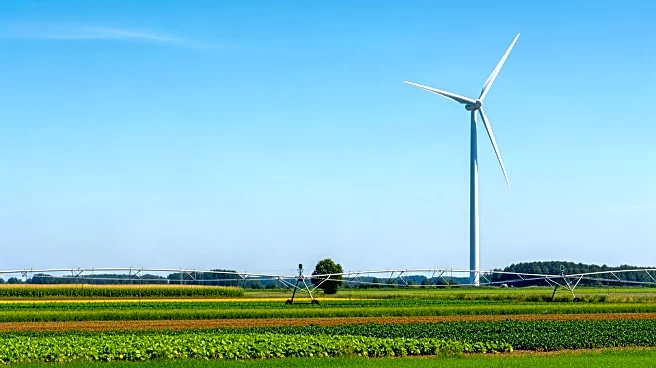What's Happening?
The Ministry of Agriculture and Livestock Development has announced significant losses in the agriculture and livestock sectors, amounting to Rs 3.55 billion, following heavy rainfall in October. The damage affected crops, livestock, seeds, and infrastructure
across several provinces. The Ministry, in coordination with provincial agricultural offices and local authorities, compiled data to assess the impact. Information Officer Mahananda Joshi stated that the Ministry will work with the National Disaster Authority to provide relief, insurance support, and technical assistance to affected farmers. A task force has been established to further evaluate the extent of the losses. Large quantities of harvested paddy were spoiled due to waterlogging, which is expected to reduce overall crop yields. Despite budget constraints, the Ministry has mobilized support in the form of fertilizers, seeds, and technical expertise to assist farmers.
Why It's Important?
The heavy rainfall and subsequent losses in the agriculture sector highlight the vulnerability of farmers to extreme weather events. This situation underscores the need for effective disaster management and support systems to mitigate the impact on agriculture, which is a critical sector for the economy. The reduction in crop yields could lead to increased food insecurity and economic strain on farmers, affecting their livelihoods. The Ministry's response, including relief and technical assistance, is crucial in helping farmers recover and adapt to future risks. The event also emphasizes the importance of developing strategies to minimize agricultural risks and enhance resilience against climate-related challenges.
What's Next?
The Ministry plans to conduct further studies to develop measures aimed at minimizing future agricultural risks. The collaboration with the National Disaster Authority and the formation of a task force indicate ongoing efforts to address the immediate needs of affected farmers and to build long-term resilience. The focus will likely be on improving infrastructure, providing insurance support, and enhancing technical assistance to better prepare for similar events in the future. Stakeholders, including government agencies and local authorities, are expected to play a significant role in implementing these strategies.













